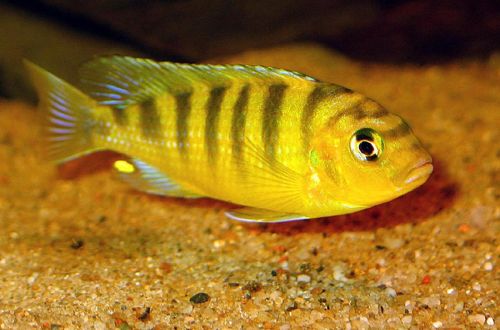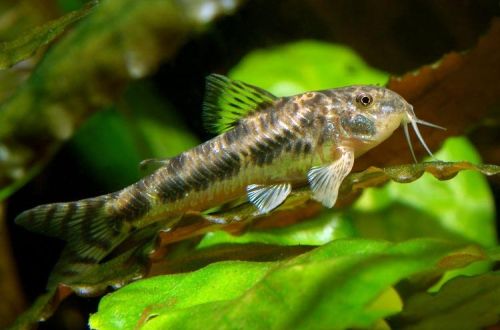
Corydoras duplicareus
Corydoras duplicareus, scientific name Corydoras duplicareus, belongs to the family Callichthyidae (Shell or callicht catfish). The word duplicareus in the species name comes from the Latin duplicare, which means “to double, multiply by two” or loosely translated “one more”. Thus, scientists emphasized the similarity of this catfish with the previously discovered Corydoras Adolf.

The fish is originally from South America from a limited area in the upper basin of the Rio Negro in the area adjacent to the western border between Brazil and Colombia. Inhabits streams and rivers flowing under the canopy of dense tropical forest, the channel of which is covered with a thick layer of fallen plant organic matter. The water is deep brown in color and has very low pH values due to the high concentration of tannins.
Contents
Description
Adult individuals reach a length of 4–5 cm. Outwardly, it is very difficult to distinguish Corydoras Adolf and Corydoras duplicareus. The latter has wider and more intense dark stripes on the back and head, and the orange pigment is more pronounced. However, these symbols cannot be used to reliably identify the species. The only difference is the presence of tiny teeth on the posterior edge of the pectoral fins in Corydoras duplicareus, but these cannot be seen with the naked eye.
Brief information:
- The volume of the aquarium – from 80 liters.
- Temperature – 20-26°C
- Value pH — 5.0–7.0
- Water hardness – soft (1-8 dGH)
- Substrate type – sand or gravel
- Lighting – moderate or bright
- Brackish water – no
- Water movement – light or moderate
- The size of the fish is 4–5 cm.
- Food – any sinking food
- Temperament – peaceful
- Keeping in a group of 4-6 fish
Maintenance and care
Relatively easy to maintain. It is necessary to provide a mild, slightly acidic aquatic environment, a varied balanced diet and avoid mixing with aggressive species.
The optimal size of the aquarium for 4-6 fish starts from 80 liters. The design uses a sandy or fine gravel substrate, several shelters made of snags or thickets of plants, or any other natural or artificial decor. Experienced aquarists add the dried leaves of some trees, which give a more natural look and positively affect the chemical composition of the water, making it similar to that in which fish live in nature. Leaves in the process of decomposition become a source of tannins. Read more in the article “Which tree leaves can be used in an aquarium.”
A stable biological balance is largely determined by the smooth operation of the equipment, primarily the filtration system, and the regular maintenance of the aquarium. At a minimum, it will be necessary to replace part of the water weekly with fresh water with the same pH and dGH values and to remove accumulated organic waste (feed residues, excrement).
Nutrition. Refers to omnivores. For many generations of life in the artificial environment, Corydoras duplicareus should be adapted to eating dry food in the form of flakes, granules, as well as tablets, gels, etc. It is recommended to diversify the diet with live or frozen foods, such as brine shrimp, daphnia, bloodworms, etc.
behavior and compatibility. Peaceful sociable fish, get along well with the same calm non-aggressive species of comparable size. Other Corydoras will make good companions, but it is worth remembering that closely related species such as Adolf Corydoras, Sands Corydoras, Burgess Corydoras and others can mate and produce hybrid offspring.





